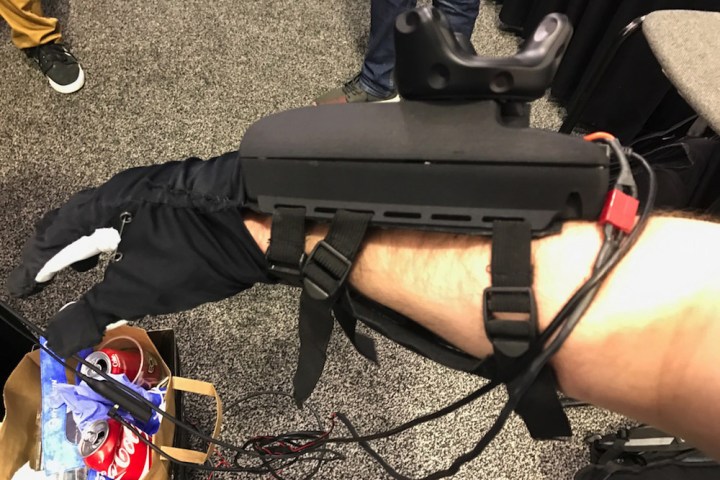
One of the most groundbreaking additions to virtual reality has been the HTC Vive’s motion controllers. While arguably the Oculus Touch controllers offer a slightly more free-feeling VR experience, both systems still rely on rumbly internal motors to give the user the feel that they’re interacting with real objects in VR.
Maestro is designed to take things to the next level. Looking like a contemporary, developmental version of Nintendo’s Power Glove, Maestro combines a cloth glove with finger caps, forearm-mounted motors, and quite a lot of cabling. Despite all of that hardware though, UploadVR claims the design isn’t bulky and feels quite light and comfortable.
After some calibration, the gloves purportedly do a pretty good job of tracking everything from wrist orientation to the movement of individual finger joints, which is far more in-depth than what is being delivered by current motion controllers.
It’s in the area of force feedback where the glove really excels though. In demonstrations, it was shown quite capable of using what are described as “synthetic tendons” to stop fingers as they close around a digital object, delivering a very real feeling of having picked something up. Similarly, the user found they couldn’t push through objects quite as easily with the glove on, making for a more real feeling virtual world.
There are some safety measures in place, though. To prevent any mishaps with the glove or perhaps a deliberately misprogrammed experience from making the motors apply unreasonable force to a user’s joints, the motors are not very strong. Contact CI assures us that any user should be able to overpower them if required to do so.
If you would like to try out the glove now, Contact CI is looking for early beta testers for the hardware. You will need to be producing a VR application that requires realistic hand interaction, though, and preferably one aimed at Enterprise and Commercial settings, so the bar is set reasonably high.




